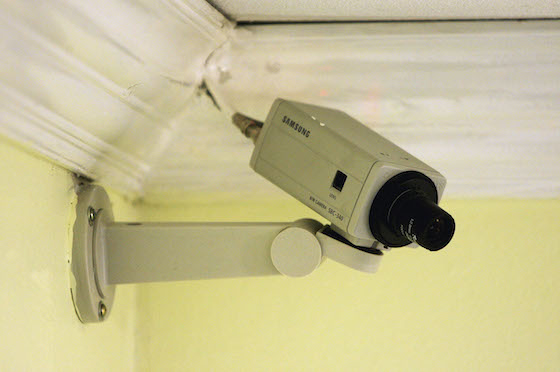At the Shore Hotel in Santa Monica, California, — an eye-catching, modern glass and metal building just a few blocks from touristy Santa Monica Pier — guest and employee security has always been taken seriously, especially since the hotel’s parking garage is open to the public.
After the tragedy in Las Vegas last October, when a hotel guest shot and killed 58 concert-?goers from his suite 32 stories above the festival grounds, the hotel has become even more vigilant.

“Definitely what happened in Las Vegas opened our eyes,” says Andrew De Boer, director of security for the Shore Hotel and its sister properties, Santa Monica Motel and the Ocean View Hotel.
Since that event, the hotel has implemented welfare checks after three days for guests who keep a Do Not Disturb sign on their door, a policy many hotels in Las Vegas and other major cities began implementing or enforcing after the shooting.
‘Sense of security’
That might seem intrusive for hotels in the United States, but according to Michael O’Rourke, founder of Advanced Operational Concepts, an international security consulting firm, visible security is common at hotels in?several Asian and Middle East countries and often is welcomed by guests.
“Armed security is expected at entrances and in lobbies, and guests take comfort in this highly visible deterrent,” he says. Uniformed officers also often inspect cars entering hotel parking garages.
One hotel in Las Vegas, the Westgate, is piloting the use of short-range radar to detect weapons on people without subjecting guests to metal detectors. The radar hotspots are unseen by guests and can be placed within existing furniture. (While Nevada is an “open-carry” state, most casinos and hotels forbid people from bringing firearms into their properties.)
Beyond physical security, Shore Hotel restricts elevator access to those with key cards. While this may not keep out “tailgaters” entirely, De Boer says, adding cameras and camera angles to the security arsenal helps monitor the comings and goings of guests.
O’Rourke agrees that restricting elevator access is a good idea for hotels, but only if the hotel has restricted or monitored other ways into a hotel.
“What will a hotel that offers unrestricted access to side entrances and stairways gain by limiting who can use the elevator?” O’Rourke asks. “When I conduct a hotel security assessment, I want to determine how secure are the elevators — and the guest entrances, and the stairs, and the delivery entrances, etc. You get the idea. If an intruder breaches the exterior by force or guile, how far can they get before encountering a physical, technological or human obstacle?”
Cameras are another good addition to the security toolbox, but only if there are people watching the screens. “Too many hotels do not have human eyeballs monitoring the cameras, making them mere evidence collectors for investigators after the fact,” O’Rourke suggests.
Monitoring access
Employee ID badges at the Shore Hotel are RFID keys that can work on many places in the hotel. But because supermarkets in Los Angeles carry RFID key-making kiosks, Shore Hotel also issues limited-access badges. “Employees leave their master key, and they take home a limited-access key to get them into the building and clock in or get to their office space,” De Boer explains. Those keys don’t have markings identifying them with the hotel.
In guest rooms, a call accounting software alerts hotel security when a 911 call has been placed from a room phone. At the front desk, scanners verify driver’s licenses and passports to prevent fraud. “With the demographics of this area, you have your professionals,” De Boer says of people attempting to fake identities during a hotel stay.
But he stresses the importance of staff training and awareness. “We do two drills a year, but we have constant email reminders,” he says. “A lot of it is situational so as events occur around the world, we remind our staff to stay vigilant.”
O’Rourke says staff training should be tailored to the employee’s position. “Housekeepers, for example, would become more alert and learn what to do if they encounter dangerous objects or suspicious circumstances in the rooms they maintain. Front-of-the-house staff would learn how terrorists conduct pre-attack surveillance, and what to do if they observe it,” he says. “Those working near delivery entrances and staff-only spaces would understand how to properly react to an unauthorized person in their area. Existing security officers would learn how to train the staff, conduct drills and document the critical lessons learned.”
In focusing on intelligence (what’s going on at the property and nearby) and planning for a variety of events or incidents, hotels will see a tangible payoff, O’Rourke says. “Typically, reports of theft and lost personal property decline. Meanwhile, overall safety and security is improved while the guest experience is often enhanced by more attentive staff.”
O’Rourke believes that hotels can be vigilant without turning off guests.
“The very nature of a hotel’s warm, inviting atmosphere makes it the definition of a soft target,” he says. “By training your employees, adding technology and barriers to fill gaps, creating plans and holding drills, you can force bad actors to look elsewhere for a softer target.”
